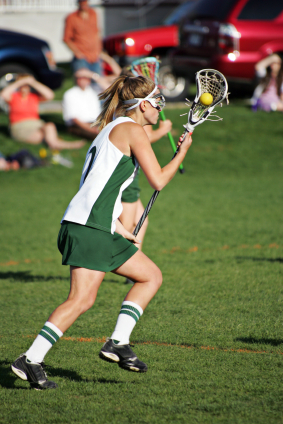Female athletes at high risk of ACL injuries can be identified with a simple, low-cost tool in a doctor's office instead of through expensive and complex laboratory-based motion analysis systems, report the authors of a 2010 study.[1]

The simplified method combines measuring the athlete's tibia or shin bone with a standard measuring tape and the athlete's weight and videotaping the motions of the knee during landing with standard camcorders. Using the measurements, doctors will now be able to quickly identify young females who are most at risk for ACL injury.
Female athletes are two to eight times more likely to injure their ACL than men, according to recent studies. Researchers believe thie higher injury rate may be the result of differences in hormone levels on ligament strength and stiffness, neuromuscular control and fatigue, lower limb biomechanics, and a difference in neuromuscular control in women and girls when landing jumps (female athletes appear to have less hip and knee bending and land more knock kneed than men.)
"This method may be used as a training camp protocol in partnership with team clinicians or set up and run in the athletic training setting," said Greg Myer, sports biomechanist at the Cincinnati Children's Hospital, lead author of the study,1 which was presented to the 2010 Annual Meeting of the American Orthopaedic Society for Sports Medicine.
"Current evidence indicates that athletes identified as high-risk for ACL injury using this approach are more responsive to neuromuscular training aimed at reducing this risk factor.
This tool can also be used to get high-risk athletes into appropriate interventions to further reduce their potential of injury risk which may increase both the efficacy and efficiency of future interventions aimed to prevent ACL injury in female athletes," Myer said.
1. Myer G, Ford K, Khoury J, Succop, P, Hewett T. "Development and Validation of a Clinic-Based Prediction Tool to Identify Female Athletes at High Risk for Anterior Cruciate Ligagment Injury" Am J. Sports Med. 2010:38(10):2025-2033.
Source: American Orthopaedic Society for Sports Medicine
Updated October 4, 2010








